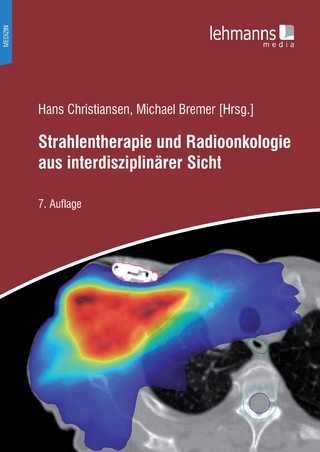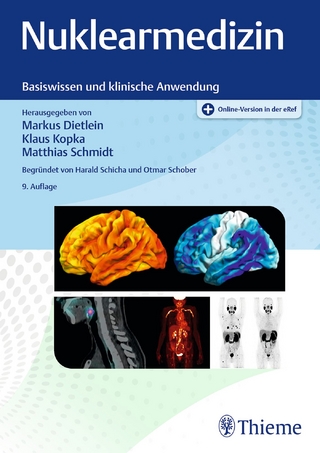
Current Directions in Radiopharmaceutical Research and Development
Springer (Verlag)
978-94-010-7289-2 (ISBN)
1. Radiopharmaceutically relevant chemistry of technetium and rhenium..- 2. Bifunctional chelators for Tc-99m.- 3. Medium half-life inorganic radionuclides for PET imaging.- 4. Therapeutic radionuclides: making the right choice..- 5. Radiopharmaceuticals for imaging hypoxia.- 6. Genetic engineering of monoclonal antibodies.- 7. The development of radiopharmaceuticals for imaging CNS receptors.- 8. Imaging the functions of the cell nucleus..- 9. Steroid hormone receptors as targets for diagnostic imaging.- 10. Radiolabelling oligonucleotides with imagable radionuclides.- 11. Radioligand binding assays: theory and practice.- 12. Molecular modelling: an introduction.- 13. Computer modelling of metal-based radiopharmaceuticals.- 14. Microautoradiography.
| Reihe/Serie | Developments in Nuclear Medicine ; 30 |
|---|---|
| Zusatzinfo | XVI, 240 p. |
| Verlagsort | Dordrecht |
| Sprache | englisch |
| Maße | 160 x 240 mm |
| Themenwelt | Medizin / Pharmazie ► Medizinische Fachgebiete ► Onkologie |
| Medizinische Fachgebiete ► Radiologie / Bildgebende Verfahren ► Nuklearmedizin | |
| Medizinische Fachgebiete ► Radiologie / Bildgebende Verfahren ► Radiologie | |
| ISBN-10 | 94-010-7289-2 / 9401072892 |
| ISBN-13 | 978-94-010-7289-2 / 9789401072892 |
| Zustand | Neuware |
| Haben Sie eine Frage zum Produkt? |
aus dem Bereich


